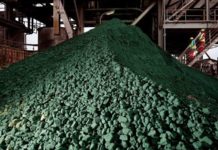
INDONESIA’S ambitious nickel expansion strategy is encountering significant difficulties as plummeting prices and ore shortages compel refiners to cut production and dismiss workers, said the Financial Times.
The nation, which possesses the world’s largest nickel reserves, made substantial investments to satisfy rising demand for the metal, essential for stainless steel production and electric vehicle batteries. However, the consequent supply surge has driven nickel prices to five-year lows on the London Metal Exchange, damaging global competitors and, in recent months, Indonesia itself.
Nickel represents one of Indonesia’s primary economic engines and features prominently in President Prabowo Subianto’s growth acceleration plans, said the Financial Times. Jakarta reports that nickel constitutes approximately 10% of the country’s annual exports, worth over $30bn, whilst the industry provides employment for tens of thousands of workers.
“What [Indonesia] has done is they have overexpanded,” said Jim Lennon, a Macquarie analyst. He calculated that Indonesia had 1.5 million tons of refined nickel production in development, beyond the 2.2 million tons produced last year.
Indonesia rapidly captured a commanding position in the nickel processing sector, controlling nearly two-thirds of global refined metal supply, rising from merely 6% a decade earlier, according to Macquarie data.
This dominance largely stemmed from former President Joko Widodo’s decision to prohibit nickel ore exports in 2020, encouraging companies to establish domestic processing facilities. However, Indonesia now struggles to meet ore demand from the expanding number of refiners who entered the market to capitalise on the country’s extensive reserves.
The supply chain bottleneck highlights the challenges of rapidly scaling industrial capacity whilst maintaining sustainable resource extraction rates in critical mineral sectors.









